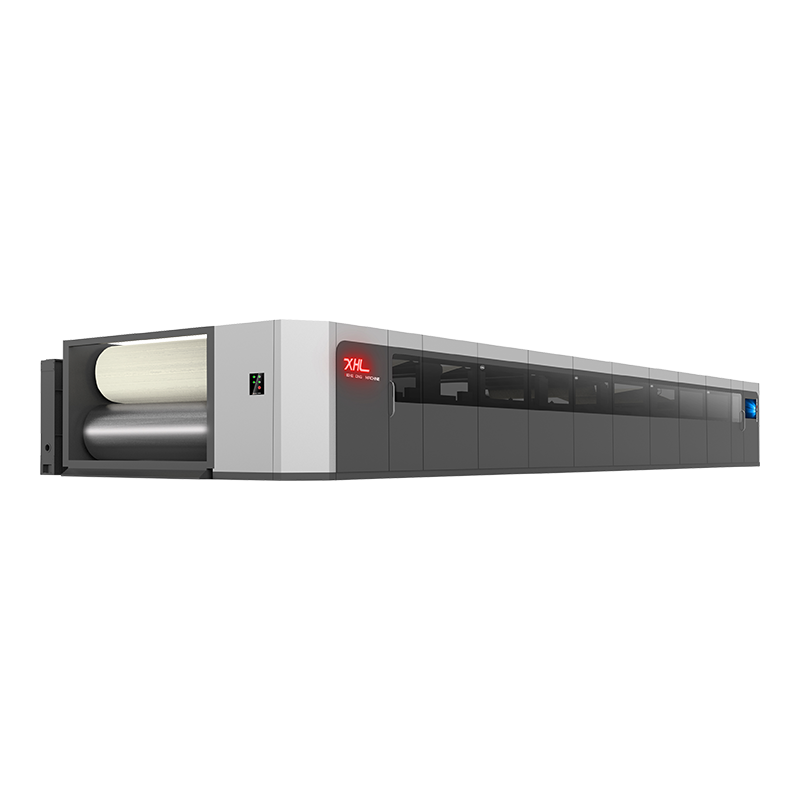The corrugated packaging industry is undergoing a technological revolution, with advanced corrugated converting equipment professional the charge. Manufacturers are now adopting smarter, faster, and more sustainable solutions to meet growing market demands. These innovations are reshaping how boxes are made, from raw material processing to final product delivery.
One of significant advancements is in corrugated carton making machine design. Today's machines incorporate artificial intelligence and machine learning to optimize production in real-time. These intelligent systems can automatically adjust settings based on paper thickness, humidity levels, and order specifications, ensuring consistent quality across every box produced. The integration of IoT sensors allows for remote monitoring, giving operators high quality control over the manufacturing process.
Modern corrugated equipment now features enhanced precision in every stage of conversion. High-speed rotary die-cutters with laser-guided alignment systems can process boards at speeds exceeding 500 meters per minute while maintaining accuracy within 0.1mm. This level of precision was unimaginable with traditional equipment just a decade ago. The latest flexo-folder-gluers combine printing, creasing, and folding operations into single, streamlined units, significantly reducing production time and material waste.

Sustainability has become a driving force behind many innovations in corrugated converting equipment. Newer models consume up to 30% less energy through optimized motor systems and regenerative braking technology. Water-based adhesive application systems have replaced solvent-based alternatives, reducing VOC emissions without compromising bond strength. Some effective machines can even process full recycled fiberboard without sacrificing output quality or machine longevity.
The evolution of corrugated carton making machine automation has dramatically improved operational efficiency. Robotic arms now handle tasks like blank stacking and palletizing, working seamlessly with human operators. Advanced vision systems perform real-time quality checks, automatically rejecting defective boxes and providing instant feedback to adjust production parameters. These automated solutions have reduced labor requirements while increasing output capacity by as much as 40%.
Maintenance and serviceability have also seen remarkable improvements in modern corrugated equipment. Predictive maintenance algorithms analyze vibration patterns, temperature fluctuations, and performance metrics to schedule servicing before breakdowns occur. Quick-change modules allow for faster format adjustments, minimizing downtime between production runs. Some manufacturers now offer augmented reality interfaces that guide technicians through complex repair procedures, reducing service calls and improving machine uptime.
As the industry continues to evolve, corrugated converting equipment is becoming increasingly versatile. Multi-functional machines can now switch between different box styles and sizes with minimal setup time, catering to the growing demand for customized packaging solutions. The integration of digital printing capabilities directly into converting lines has opened new possibilities for short-run, variable-data packaging without sacrificing production speed.
These technological advancements in corrugated carton making machine and related equipment are transforming packaging facilities into highly efficient, data-driven operations. The combination of speed, precision, and sustainability makes modern corrugated equipment indispensable for manufacturers looking to stay competitive in an ever-changing market. As these innovations continue to develop, they promise to further revolutionize how we produce and utilize corrugated packaging solutions.
Looking ahead, the next frontier for corrugated converting equipment lies in the integration of cloud computing and big data analytics. Modern corrugated carton making machines are increasingly being equipped with data collection modules that track everything from energy consumption to production yields. This information is then processed through advanced analytics platforms, providing manufacturers with actionable insights to further optimize their operations. The latest generation of corrugated equipment can even leverage this data to automatically adjust production schedules based on predictive demand models, ensuring good resource allocation. These smart systems are creating a new era of connected converting where machines not only perform their primary functions but also continuously learn and adapt to improve overall plant efficiency. Such technological convergence is setting the stage for fully autonomous packaging plants that can self-regulate and make real-time decisions with minimal human intervention.

 English
English  Español
Español  Português
Português  عربى
عربى 




